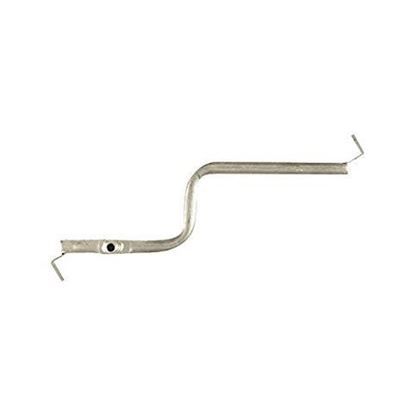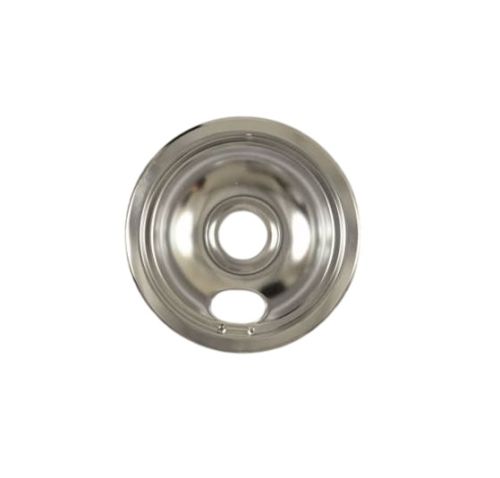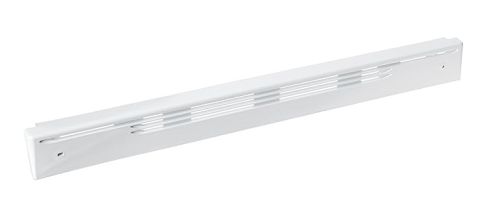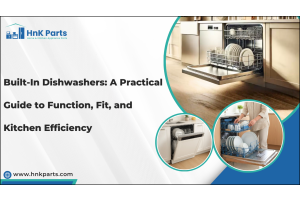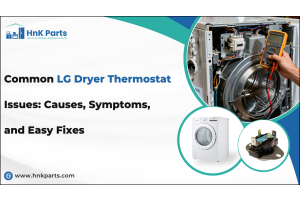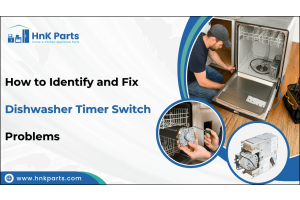
Thermador Stove Parts Issues: Here's How to Troubleshoot
There is nothing more important than a food processing appliance that will last you a lot of years and not make you regret your purchase. Thermador stoves are of known quality and performance but, like any appliance, suffer problems of use over time. In this blog, we are going to discuss some of the common problems with Thermador stove parts and also some of the troubleshooting methods. If you have a malfunctioning burner or your Thermador oven won’t heat then you will want to learn how to fix these problems to save time and money.
Common Thermador Stove Igniter Problems and Fixes
Thermador stove igniters are important to the proper operation of your cooktop and can have several issues that keep them from igniting the burners.
-
Faulty igniter: If the igniter glows but fails to light the gas, it may be that the igniter is defective. In these cases, you will need to replace the Thermador igniter. This is most often the first step in resolving ignition issues.
-
Debris on the igniter: Food residue or dirt sometimes builds up on the igniter's surface and prevents the ignition. The only way to fix this issue is to turn off the stove and clean the igniter surface with a damp cloth, making sure that there is no debris on it.
-
Wiring issues: Damaged or loose wires can hurt the igniter. Check all connections associated with the igniter carefully. It may require repair or replacement of damaged wiring if you do find any.
Thermador igniter replacement
If you find out that you need a Thermador igniter replacement, follow these steps to successfully replace it.
-
Turn off power and gas: Before starting work, make sure the stove is completely powered down and the gas supply is off.
-
Remove the cooktop: Watch out for the instructions on how to safely take out the cooktop, as well.
-
Access the igniter: Find the bad igniter among Thermador cooktop parts.
-
Replace the igniter: Remove the old igniter and put in the new one, making sure all connections are compacted.
-
Reassemble the cooktop: Reassemble the cooktop and reconnect it to power and gas once the new igniter is in place.
How to Troubleshoot Thermador Stove Burners Not Heating Properly
If the Thermador gas stove burners are not heating enough, you can use these troubleshooting steps to find the problem and also possibly fix it.
-
Check burner caps and heads: Check the burner caps and heads of your Thermador gas stove. Make sure that they are properly aligned and seated on their respective burners.
-
Inspect the control settings: Make sure the knobs are set as you wish for the heat.
-
Test the power supply: It’s important to make sure that your Thermador gas stove has power. If the circuit breaker has tripped or there are any blown fuses, check the circuit breaker. If the problem is with the power supply, fix it to get the stove working again.
-
Fixes: Reset control settings, realign or clean the burner caps/openings, or restore power.
If you follow these you will be able to handle the Thermador range top parts problems. Preventing heating problems on your Thermador gas stove can be achieved through regular maintenance and checks.
How To Clean Gas Stove Grates And Burners?
Fixing Thermador Stove Temperature Control Issues
Having temperature control issues on your Thermador stove parts can result in uneven cooking, which can ruin your cooking experience. It is important to address these problems as soon as possible for consistent performance.
-
Faulty thermostat: One of the main reasons for inaccurate temperature readings is a malfunctioning thermostat. To make sure your Thermador stove parts work correctly, you may need to recalibrate or replace the thermostat. The first step in diagnosing the problem is to check the thermostat’s accuracy.
-
Control board issues: The electronic control board may fail and cause temperature control problems. To diagnose the problems with the control board, Thermador parts and wiring need to be thoroughly inspected to find out if there are any faults present.
-
Fixes: Addressing these temperature control issues will start with testing and replacing the thermostat if it is discovered to be faulty. If the problem is with the control board, you may have to call on professional service to repair the board. It will help you to make informed decisions when repairing your stove by understanding which specific Thermador parts are involved in its operation.
Thermador Stove Gas Leak Signs and What to Do
When it comes to a Thermador gas stove, gas leaks are a serious hazard. So, you should know the warning signs of a gas leak and take prompt action if there is a gas leak. There are some common signs of a gas leak that is associated with your Thermador gas stove.
|
Gas Leak Signs |
Description |
|
Smelling gas |
A strong odor similar to rotten eggs indicates a gas leak. Natural gas is given this smell to make leaks easily detectable. |
|
Hissing sound |
A hissing noise from the stove may indicate gas escaping from a line or seal. |
|
Dead plants nearby |
Wilting or dying plants near the Thermador cooktop parts could signal a gas leak in the area. |
-
What to do in case of a gas leak: If you think there is a gas leak, everyone should leave the area of the Thermador gas stove immediately.
-
Avoid igniting flames: Matches, lighters or any other open flames should not be used. In addition, avoid operating electrical switches, as a spark may ignite the gas.
Solving Thermador Stove Display and Control Panel Malfunctions
Problems with the display and control panel of your Thermador range top parts can interfere with the stove's operation.
-
Unresponsive touch controls: Dust or moisture buildup may be the reason that the touch controls on your Thermador range top parts are unresponsive. First, brush the control panel with a soft, dry cloth to remove particulate matter.
-
Error codes: The Thermador appliances usually give error codes that can help in diagnosing a particular problem with the stove display and control panel. If the error code comes up, refer to the user’s guide for your particular model.
-
Fixes: Control panel malfunctions can be fixed by some simple fixes. Reset the power to the appliance first; this can sometimes clear temporary glitches. For a few minutes just simply turn off the breaker and then turn it back on.
Stove Parts: A Complete Guide to Maintenance and Replacement
Why Your Thermador Stove Oven Won’t Heat and How to Fix It
If your oven isn’t heating properly, consider the following possible causes:
-
Heating element failure: The element may fail if it is used for a long time. Replacing faulty Thermador stove parts such as the baking or broil elements is necessary to restore proper function.
-
Thermostat problems: The thermostat may be at fault, just as with stovetop temperature control.
-
Inspect and replace heating elements: Look for any visible damage or failure of the baking and broil elements. If they are not working properly, replace them with new Thermador stove parts so that your oven will heat correctly.
Test the thermostat for continuity using a multimeter. If it turns out to be faulty, recalibrating or replacing it will fix your heating problem.
Troubleshooting Thermador Stove Self-Cleaning Function Issues
Having problems with the self-cleaning function of your Thermador stove can be annoying. Here are some ways to troubleshoot common problems with the self-cleaning cycle, particularly for Thermador stove parts and Thermador cooktop parts.
-
Self-clean cycle won't start: The most common problem with the self-cleaning function is that the cycle will not start. Take the following actions to help troubleshoot this problem.
-
Close and lock the oven door properly: For the self-cleaning cycle to start, the oven door must be securely closed and locked. Make sure there is nothing that would stop the door from closing completely.
-
Inspect the Thermador stove parts: Sometimes faulty components can be traced as the cause of malfunctions. Look for any broken or malfunctioning parts that could prevent the self-cleaning function.
-
Error messages: If your Thermador stove is giving you error messages during the self-cleaning cycle, you must take care of these messages as soon as possible.
-
Check Thermador cooktop parts: Issues with the cooktop may sometimes affect the operation of the oven. Check for loose connections or faulty parts on the cooktop that could be associated with the self-cleaning feature.
Thermador stove parts are not an overwhelming task to address. Once you are aware of the common problems you may encounter and can troubleshoot them properly your kitchen will run smoothly. By doing regular maintenance and timely repairs on your Thermador cooktop parts, you will also be able to increase the longevity of your appliance. HnKParts offers a wide range of stove and oven replacement parts at competitive prices, ensuring the authenticity of Thermador stove parts.
FAQs
Why is my Thermador gas stove not lighting but clicking?
If you have a gas stove not lighting but clicking, there may be a problem with the igniter, clogged burner ports, or moisture. If necessary, try cleaning the burner and checking for a Thermador igniter replacement.
How do I know if I need to replace Thermador stove parts?
If your Thermador gas stove has inconsistent heating, control panel problems, or frequent ignition failures, check the Thermador cooktop parts and replace them with the Thermador warranty if applicable.
How long is the Thermador warranty?
Most appliances from Thermador come with a two-year limited warranty, parts, and labor. Extended warranties of up to five or ten years may be available for some components such as sealed refrigeration systems.



